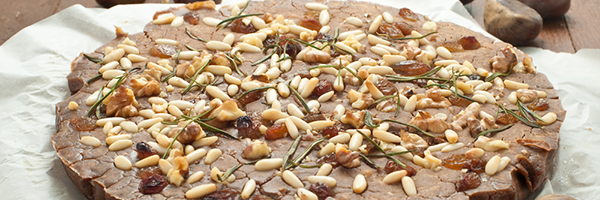When you think of the holidays, certain classic themes come to mind—sugar plums, fir trees, snowflakes, presents, and family.
And of course, chestnuts roasting on an open fire.
Yes, those chestnuts made famous by classic crooner Nat King Cole in the aptly-named “The Christmas Song” in 1946, described a warm, delightful treat. But in thinking about them and the nostalgic feelings they provide, we wondered to ourselves, “What else do you do with chestnuts?”
We’re in the midst of helping ship 10 tons of chestnuts from Europe to the United States every single day during the holiday season. That’s a lot of chestnuts and a lot of open fires. But surely there’s more to this story. What else is so special about them? Beyond being the opening line in a quaint Christmas song, we explored what makes chestnuts a coveted treat. Here’s what we found.
The Great American chestnut blight
Around the beginning of the 20th century, nearly 4 billion American chestnut trees grew from Maine to Alabama. Strong and resistant to rot, the American chestnut trees were used for everything from log cabins to furniture to fencing. The actual chestnuts themselves were shipped in trains all across the U.S. as a holiday staple, and it fed millions of animals throughout the year.
But at the turn of the 20th century, a new parasite to the region sparked the great chestnut blight and completely destroyed the American chestnut population within 40 years. What was once a staple of American society disappeared within one generation.
Today, chestnuts that are processed and consumed in the United States are shipped from temperate European countries like Italy, or Asian countries like China and Korea.

Pureed, floured and candied
Throughout Europe, from Portugal to France, people developed diverse ways to prepare chestnuts besides a classic open fire roast. One way to enjoy chestnuts is to turn them into a puree by boiling them and blending them with cream. This makes a great combination for a pie or tart.
Another way chestnuts can be prepared is to bring out their natural sweetness by roasting or boiling them in a bath of syrup. Candied chestnuts make a great hand-held treat to carry around during cold holiday evenings.
And for those with a gluten intolerance, chestnut flour is a great alternative to use for baking holiday goods. If you’re feeling handy, you can make your own flour by dry roasting and peeling them at a low temperature, and then grinding the chestnuts as finely as possible. If you’re short on time or effort, just track chestnut flour down online and use it in cakes, pies and other baked essentials.
Global tastes
Chestnuts, while consumed by the ton in the United States during the holiday season, are an ingredient of choice in other parts of the world all year long. The sweet chestnut trees of France have been used as a recipe staple for centuries. And in China, chestnuts are weaved into the fabric of its food culture.
Chinese cooks use chestnuts in a myriad of ways, namely in soups and stews. But heavier dishes like casseroles and pastas feature them as the main ingredient. They can also be used to add a subtle level of sweetness into meat dishes, such as lamb and mutton.
In Europe, they are embedded into regional dishes throughout the continent in unique ways. In Italy, chestnuts are used in Montebianco, a cream-based dessert. Thick chestnut puree is topped with cream to look like the eponymous mountain it’s named after. French bakers use chestnuts in a delicacy called marrons glacés, in which they’re cooked in syrup and turned into a candied treat.
And in Spain, chestnuts are transformed into a sweet-meets-savory soup that can be hot or chilled. Used as a base, chestnut soup can be spiced up with cayenne or sweetened as a puree with a sweet creamed cheese added on top.
No matter where or how they’re prepared, chestnuts always promise to deliver a sweet and warm treat. Whether it’s throughout the holiday season in the United States or in dishes around the world, the classic chestnut can do so much more than roast on an open fire.

Tuscan Chestnut Cake
Ingredients
- 2 ounces raisins
- 16 ounces sweet chestnut flour
- 2 tablespoons sugar
- Zest of 1/2 orange
- Pinch salt
- 2 cups water
- 3 tablespoons olive oil
- 1 fresh rosemary sprig
- 1 ounce chopped walnuts
- 1 ounce pine nuts
Instructions
Preheat oven to 400 F.
In a mixing bowl combine the flour, sugar, salt, and water. Whisk the batter well until the batter is silky smooth in consistency.
Add the olive oil to a nonstick pie pan and heat in the oven for 5 minutes. Once the oil and pie pan are hot, add the batter. Smooth out the batter evenly. Sprinkle the raisins, pine nuts, rosemary and orange zest on top.
Bake for 10 to 15 minutes, or until the top is golden.
### |
Like this article? Have feedback or questions? Let us know.